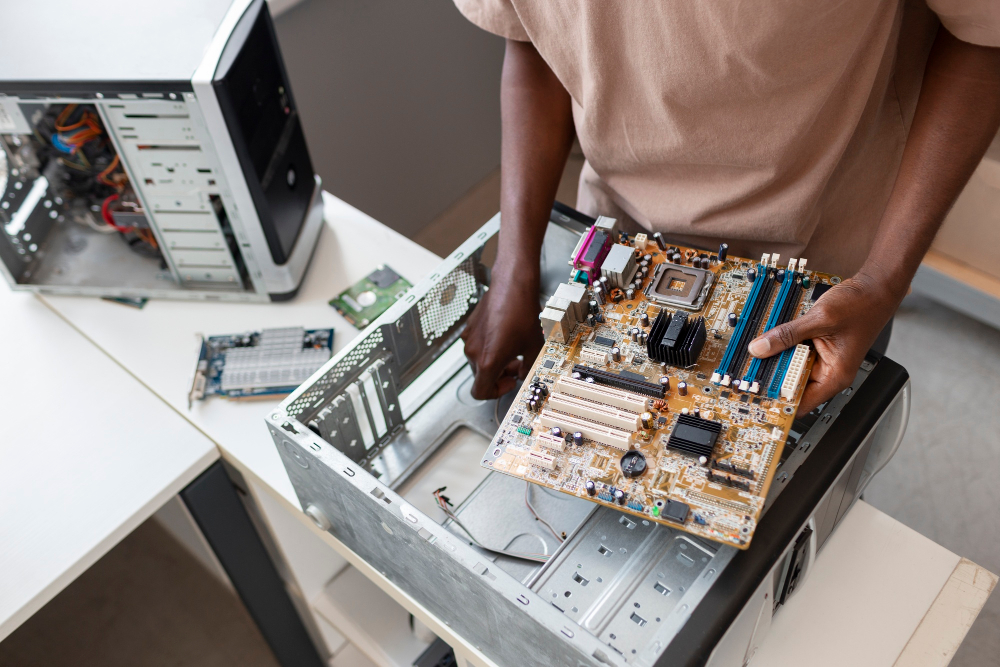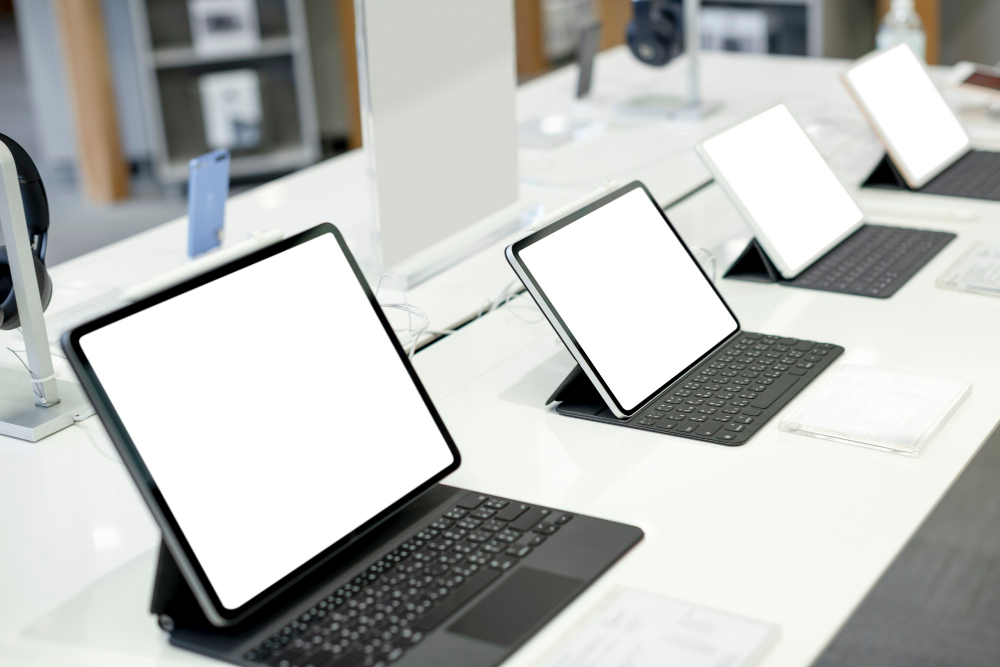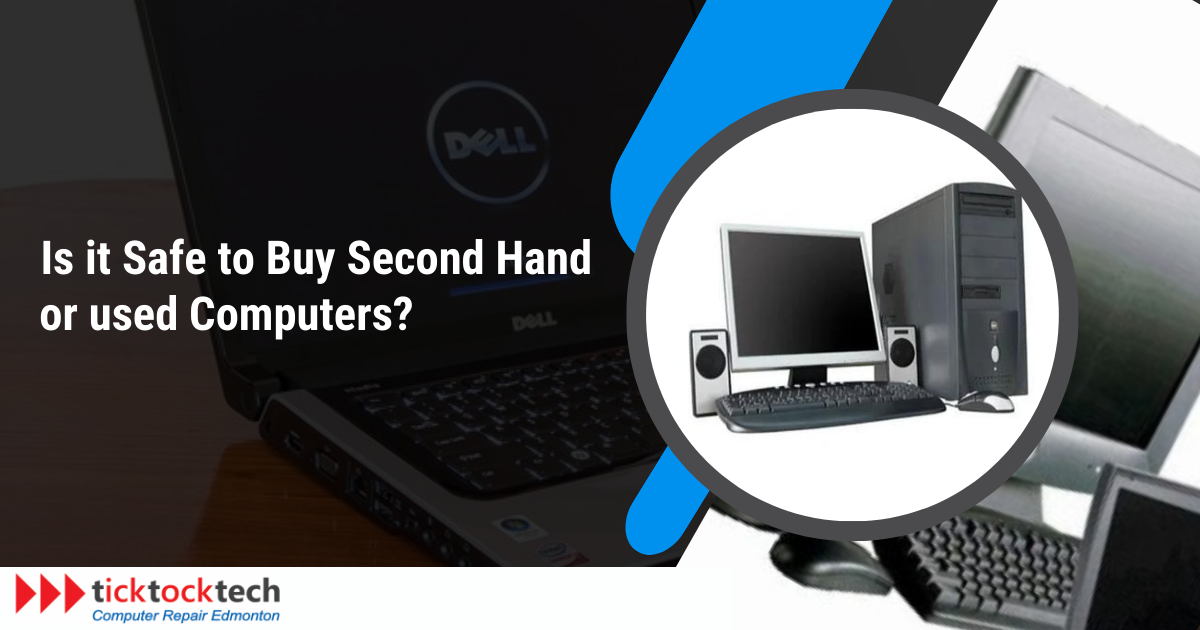We all look at the specifications of laptop computers and how amazing their features are. While we do this and admire the hardware and software features, there is also an important factor to look at. This factor sums up if you are going to get that gadget you long for. Well, it’s obvious, this factor is the price of the device (Laptop or Desktop.) The price of a laptop is an unspoken backbone of the device. Irrespective of how techy and attractive the specifications are, affordability is a factor.
Filling this gap of affordability, brings about people sorting for used or second-hand computers. However, you might be wondering if they are safe to buy. Yes, second-hand or used computers are safe to buy provided you check, and test run before buying, and they are from a trusted source. Now, how do you know they are safe to buy? Let’s have a look at the factors that will guide you in buying a used computer system in 2024.
1. Check for Physical Dents
When buying a used computer, first impressions might be deceptive. Look for physical damage to the outside of the computer, such as dents, scratches, or cracks. Check that the desktop or laptop has not suffered any physical damage from harsh handling, such as dents or scrapes. Even though aesthetics may not necessarily have an impact on functionality, they certainly disclose a lot about how the item was treated.
Examine the outside for any dents, since these may indicate inside damage. These symptoms may indicate that the device has been roughed up or has been fixed in the past, which might influence its performance and longevity. Check for obvious signs of damage to the screen, keyboard, and connections.
2. Check the specifications.
Understanding the technology needs is critical to success. Check the graphics card, RAM, storage capacity, and processor to ensure they are appropriate for your requirements. You should also compare the computer’s specifications to those of rival models. Knowing the specifications enables you to evaluate the computer’s capabilities and potential lifespan, even if earlier versions can still be difficult.
Check that all of the required components are present, including audio jacks, USB ports, and HDMI slots. Check for pre-installed important software and ensure that the operating system is updated. You should also consider the computer’s age, since older PCs may have fewer upgrade options or use outmoded technology.
3. Ask if any Accessories were Changed
Accessories like power adapters, batteries, and chargers make computers more usable. Determine whether any of these parts have been changed or swapped. The item’s compatibility and performance may be impacted if the seller updates or replaces individual components. While aftermarket attachments may not perform as well as originals, they often fit snuggly inside the device.

Wear and tear might limit the reliability of these attachments, so examine them as well. For example, before changing a part in a MacBook laptop, you should ensure that it is compatible with the model. Check that the taskbar is not displaying any error warnings.
4. Check the Battery health
Checking the status of the battery is critical for laptops. The performance and service life of batteries deteriorates over time. In most cases, your operating system includes a utility for checking the battery’s health.
On Windows, you may retrieve detailed information by using commands like “powercfg /batteryreport” from the Command Prompt. The “System Information” function on macOS can help you understand your battery’s life and health. Determine if the battery can keep a sufficient charge for your intended application.
5. Test run the Laptop for Desired Operations
When evaluating a used computer, it is necessary to do it manually. Let the computer run a test to assess its performance. Check that everything is working properly by connecting to the internet, launching multiple programs, and doing basic tasks. Make that everything works properly, from booting up the OS to launching programs and accessing the web.
Overheating, unexpected shutdowns, and sluggish performance are all potential issues to look out for. Stress tests and benchmark tests, which are freely accessible online, can be used to evaluate the computer’s performance under various pressures. If possible, invite a family member or friend who is proficient with technology to assist with the exam.
6. Purchase from reputable vendors.
The source is quite crucial while navigating the used computer market. Choosing trustworthy sources lowers the likelihood of obtaining faulty or damaged devices. These sellers might be local merchants, licensed refurbishers, or online markets. Typically, these sellers inspect and restore their items to ensure they meet quality standards. Purchasing from reputable merchants lowers the risk of fraud or faulty items.
7. Check the Warranty and Return Policy.
To reduce risk, carefully examine the warranty and return policies for the used computer. Reputable sellers are more likely to offer some type of guarantee, reflecting their confidence in the product’s performance. A guarantee protects you from unanticipated difficulties and ensures that if the computer fails during the warranty period, you may return it or have it repaired. Furthermore, a clear and flexible return policy acts as a safety net, allowing clients to deal with unexpected difficulties straight immediately.

8. Ensure Data Security
Prioritizing data security is critical before using a secondhand computer. Use reputable antivirus software to do a thorough virus scan to remove any potential malware or viruses from the device. Additionally, to ensure the safety of your sensitive information, consider resetting the computer to its original settings. This stage removes all current user data and settings, leaving you with a clean canvas to personalize the computer to your specifications.
9. Consider the age and upgrade possibilities.
It is critical to assess the software’s compatibility with existing applications and future upgrades for refurbished computers. Verifying characteristics such as CPU speed, RAM capacity, and storage ensures that the computer is adequate for its intended usage. Even if the current standards can fulfill immediate demands, the ability to upgrade components ensures flexibility in meeting evolving requirements.
Evaluating factors such as expansion slot availability, RAM and storage upgradeability, and compatibility with current hardware components guarantees that the computer may be improved to perform even better in the future as demands evolve. This warranty not only extends the life of the bought device but also provides a positive user experience.
Is it Safe to Buy Used Computers?
Used computers are safe to buy if you can scrutinize and check every feature before paying. That is the best way to ensure its safety, as it will give you insight into what you want to buy. Although, you can also buy used computers online, from reputable stores, but you must be sure of their return policy and the warranty on their products.
Before buying a used computer, it is essential to understand what you are buying. Scrutinize the hardware, check the features on the Windows or Mac “about” settings, test run the computer, and verify its data safety. Also, be aware of their return policy, so when you get home, examine it further, and test running with your aim of getting the laptop. Once you find any irregularities, you can take it back ASAP. Overall, it’s safe to buy a used computer provided you are buying from a reliable source, and you scrutinize the device very well.
Where can you get Reliable Used Computer Devices in 2024?
You can get reliable used computers at online retail stores like Amazon, Best Buy, Newegg, Costco, and many others. Reliable retail stores near you can also sell your used computers with a better return policy and warranty. Also, you can contact a computer repair store near you, or if you have a computer repair technician, they can help you source reliable used computer devices that will be less costly, and serve your purpose.
1. Amazon
Amazon, one of the world’s largest online retailers, sells a variety of products, including electronics, home appliances, and more. Their fast and free two-day shipping for Prime members are two of their top features.
Amazon’s reputation for dependability is due in part to its robust delivery system, extensive vendor network, and user feedback. The website provides accurate reviews for each product seller at a variety of pricing points, emphasizing the significance of customer trust.
2. Newegg
Newegg is an online shop that specializes in electronics and computer gear. They provide various devices, including tablets, laptops, desktop computers, and more. Newegg, renowned for its tech-savvy customer base, provides trustworthiness through user ratings, product details, and a knowledgeable support team.
3. Best buy
Best Buy is well-known for both its physical stores and its extensive online store. Best Buy is well-known for its extensive product line, which includes anything from cell phones to household appliances. Best Buy is a force to be reckoned with in both the physical and digital markets.
Take Away
In Conclusion, the choice to buy a secondhand computer requires a careful balance between price and dependability. While pricing is an important issue, consumers must prioritize certain aspects to ensure the safety and effectiveness of the acquired gadget. Physical inspection, specification checking, operation testing, and data security verification are all critical procedures. Furthermore, ordering from reliable suppliers that have clear warranty and return policies strengthens the safety net.
Embracing these concerns enables consumers to confidently traverse the secondhand computer market, making educated decisions that match their budget and technological requirements. Finally, when purchased from reputable vendors, old computers provide a cost-effective and ecologically friendly alternative without sacrificing quality.

